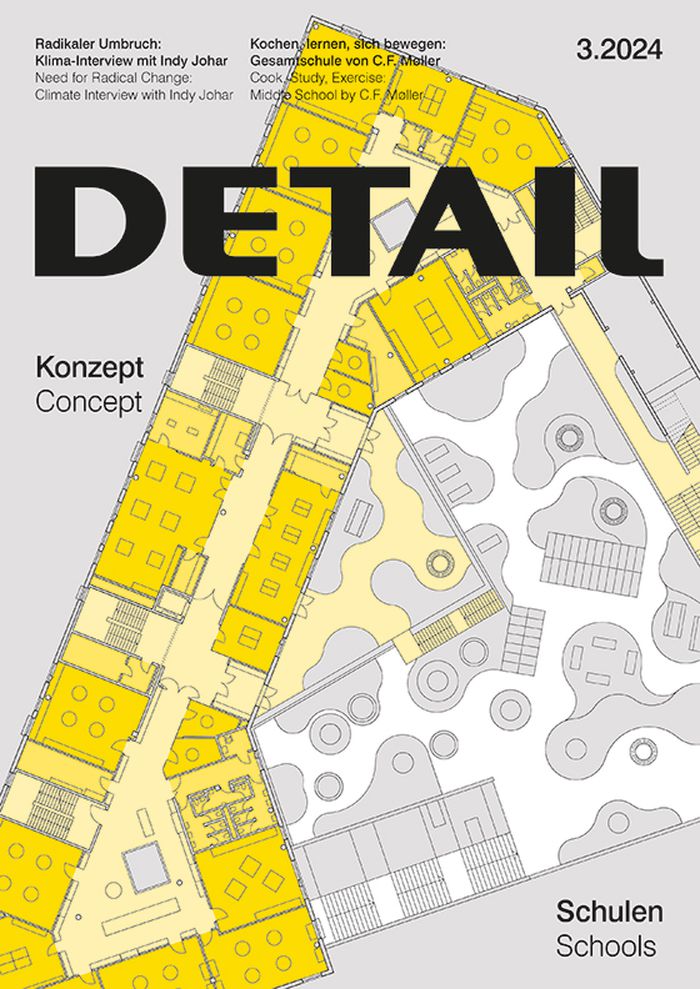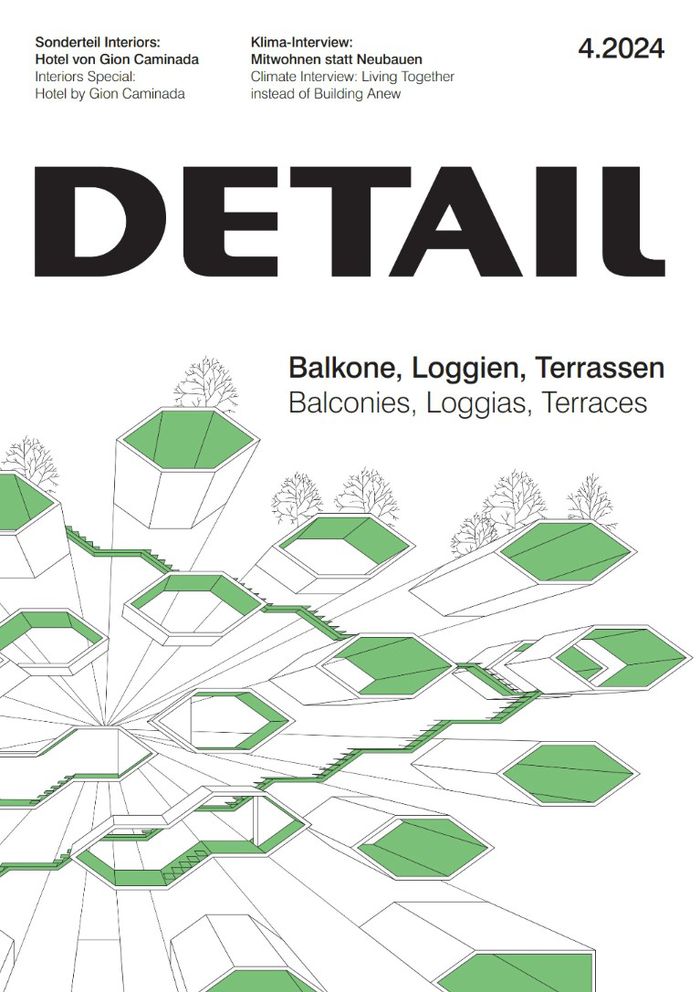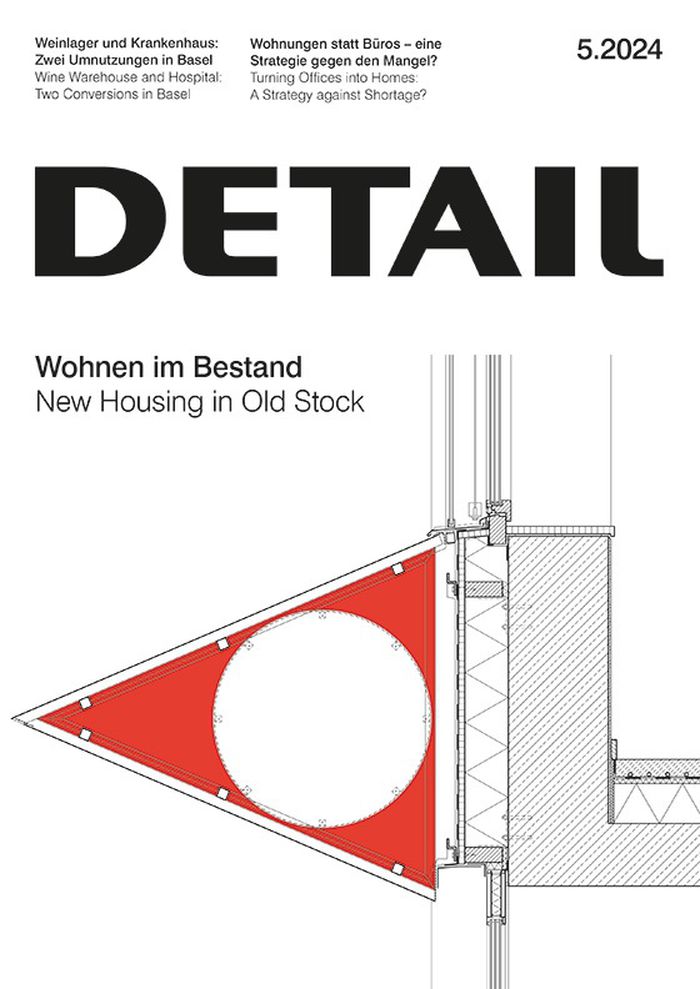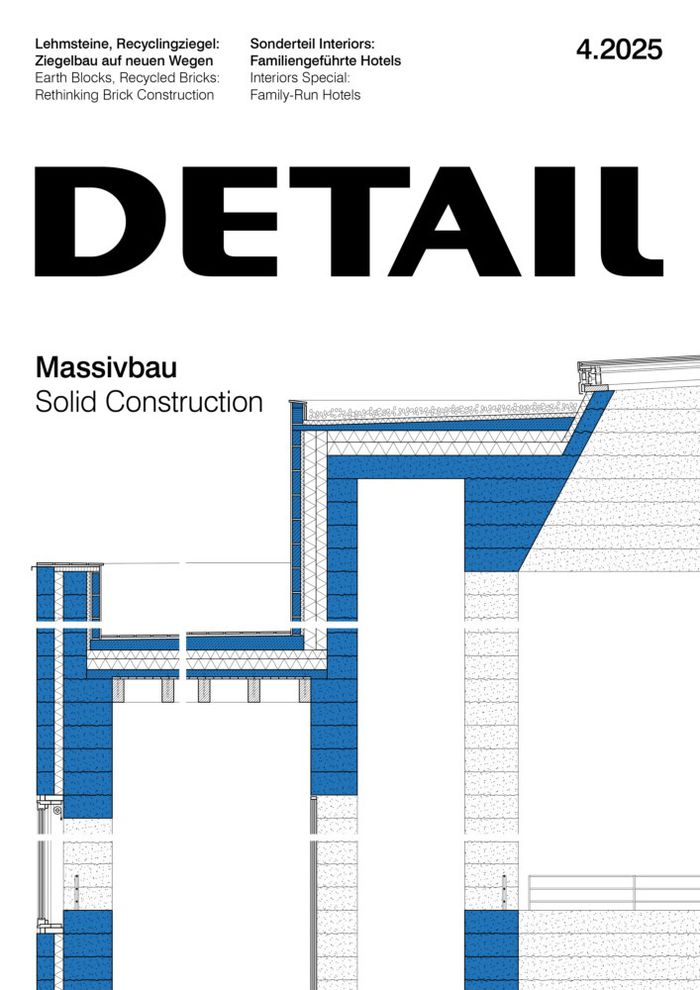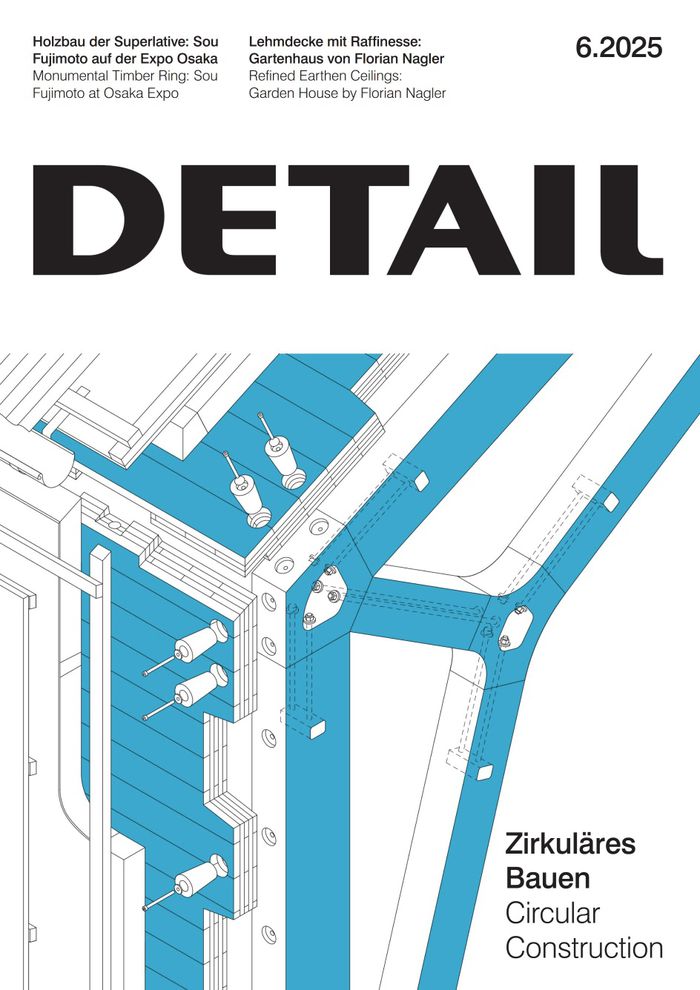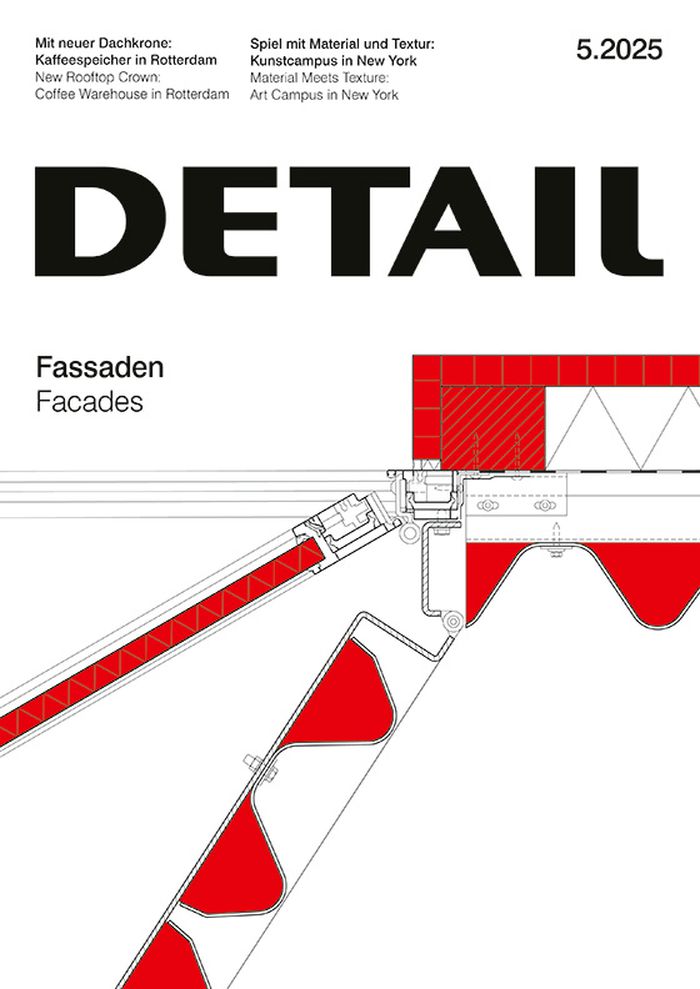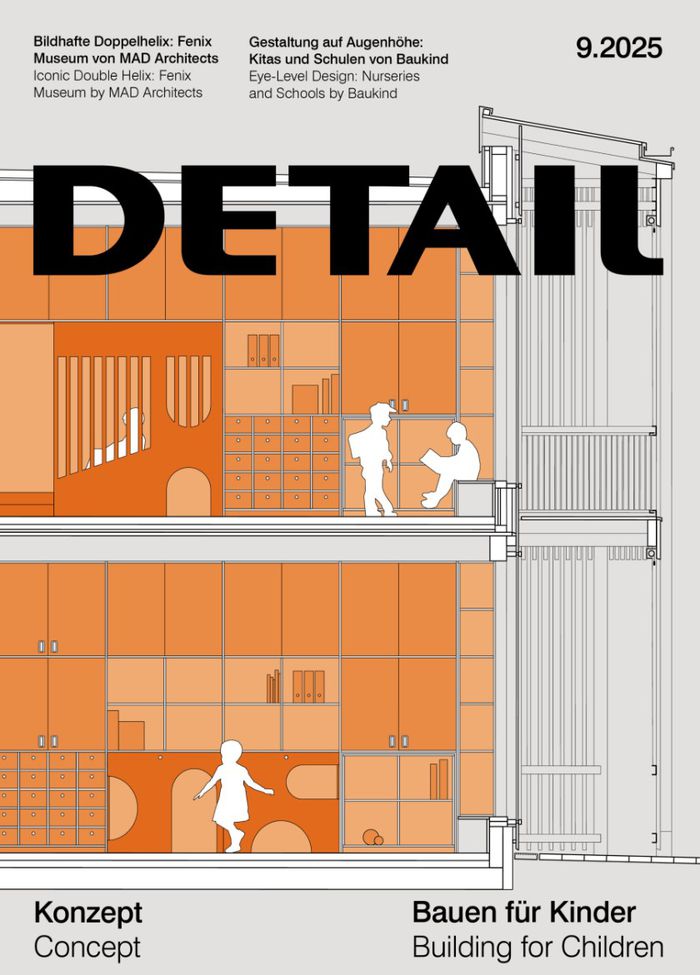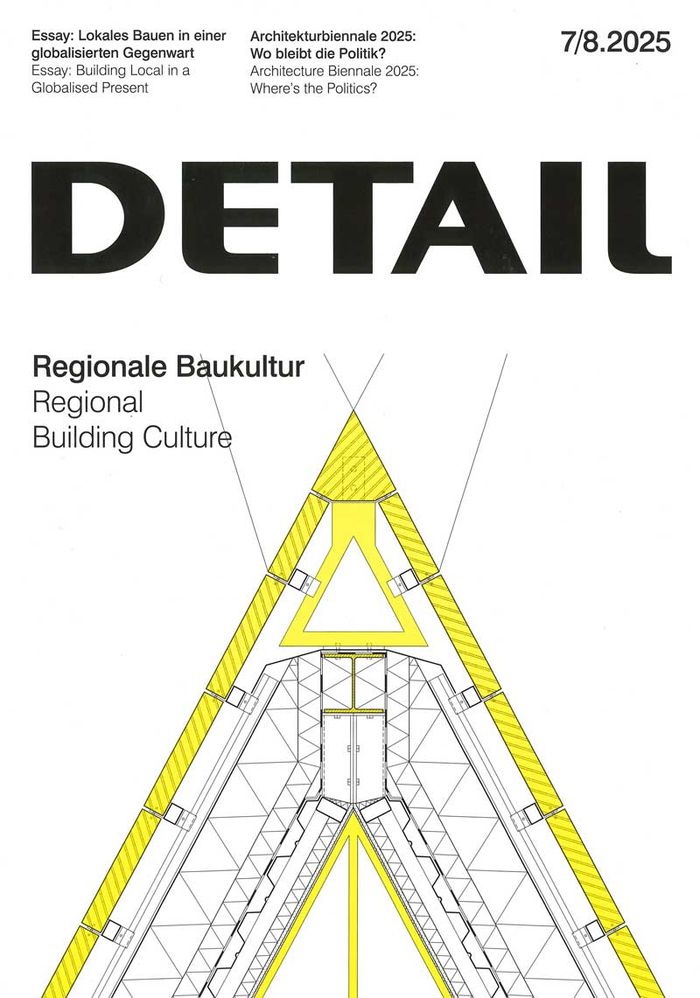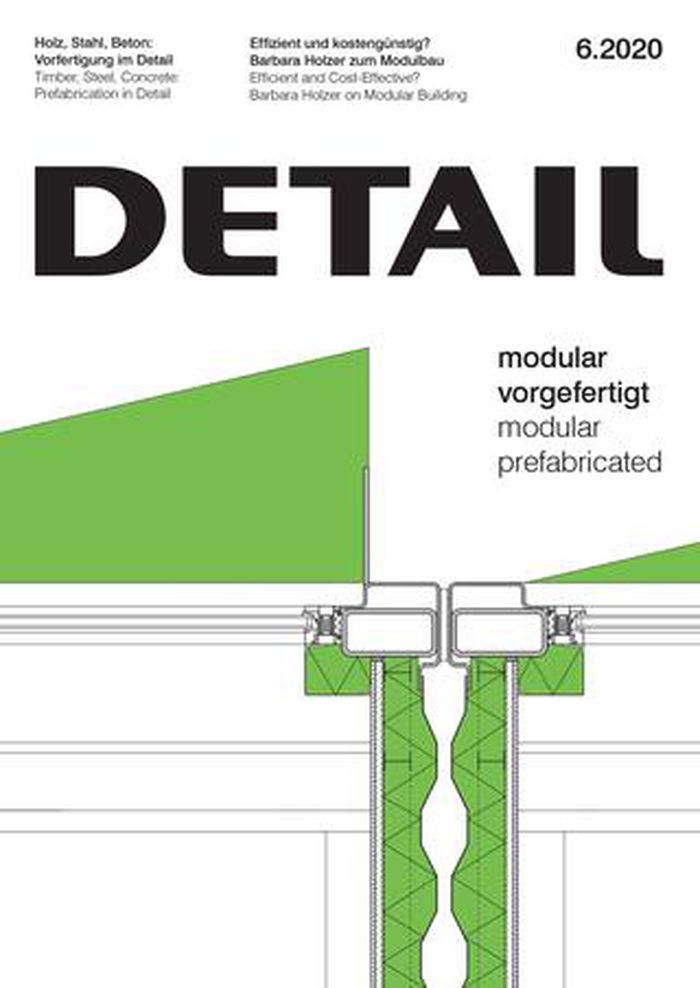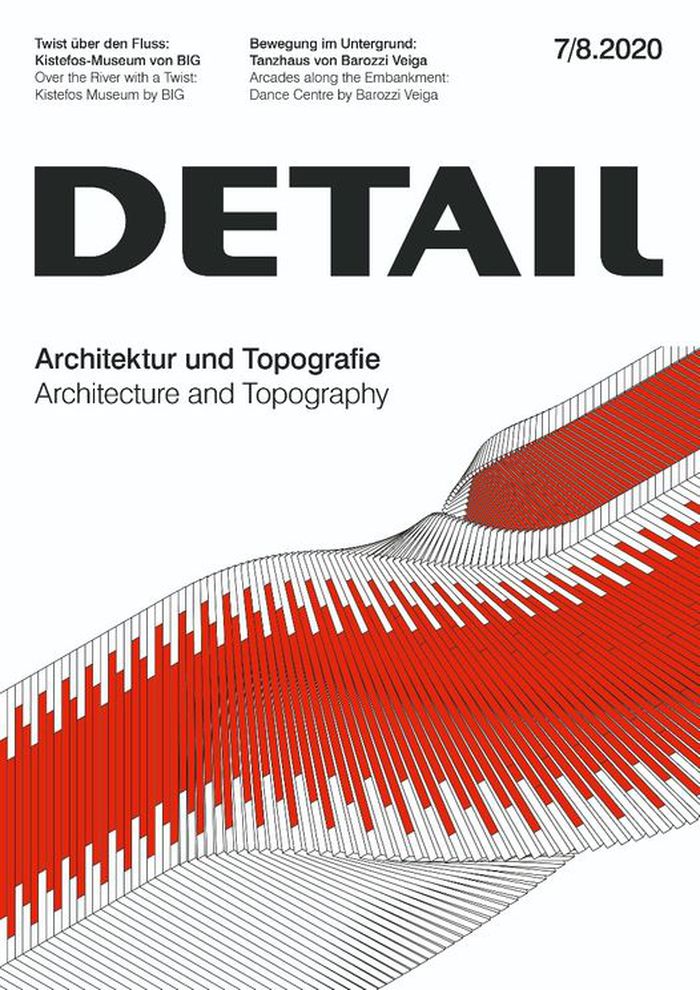Detail 3 2024 : Schools
$44.95
(available in store)
Summary:
The latest issue is now available at the bookstore.
Detail 3 2024 : Schools
Actions:
Price:
$44.95
(available in store)
Summary:
The latest issue is now available at the bookstore.
Magazines
$44.95
(available to order)
Summary:
New issue now available at the bookstore!
Detail 4 2024 : balconies, loggias, terraces
Actions:
Price:
$44.95
(available to order)
Summary:
New issue now available at the bookstore!
Magazines
$44.95
(available to order)
Summary:
The latest issue is now available at the bookstore.
Detail 05 2024: New housing in old stock
Actions:
Price:
$44.95
(available to order)
Summary:
The latest issue is now available at the bookstore.
Magazines
$44.95
(available to order)
Summary:
Around 75 % of residential buildings in Germany are made of masonry – a trend likely mirrored across Europe, such as in the southern regions and the UK. This enduring preference reflects growing confidence in solid construction and provides the impetus for dedicating this issue of Detail to the topic. There are many reasons to opt for brick, including local building(...)
Detail 4 2025: Solid construction
Actions:
Price:
$44.95
(available to order)
Summary:
Around 75 % of residential buildings in Germany are made of masonry – a trend likely mirrored across Europe, such as in the southern regions and the UK. This enduring preference reflects growing confidence in solid construction and provides the impetus for dedicating this issue of Detail to the topic. There are many reasons to opt for brick, including local building traditions. In Limerick, Ireland, Níall McLaughlin Architects designed a brick exhibition building celebrating rugby, the national sport. In Berlin, nearby brick cemetery structures inspired the facade colour of a foundation centre. Using single-coloured exposed concrete and two brick types, AFF Architekten made a bold red statement in the cityscape.
Magazines
$52.00
(available in store)
Summary:
The cradle-to-cradle principle envisions buildings returning to the natural cycle after use. In practice, however, most are only partially composed of natural or compostable materials. One notable exception is Florian Nagler’s Garden House, winner of the Detail Award, which closely follows this principle. Another route is the reuse or refurbishment of components from(...)
Detail 6 2025 : Circular construction
Actions:
Price:
$52.00
(available in store)
Summary:
The cradle-to-cradle principle envisions buildings returning to the natural cycle after use. In practice, however, most are only partially composed of natural or compostable materials. One notable exception is Florian Nagler’s Garden House, winner of the Detail Award, which closely follows this principle. Another route is the reuse or refurbishment of components from demolished buildings. But this, too, is complex – components are often scarce and costly to extract and and make fit for new applications. To facilitate recycling, some structures are being designed for disassembly. Yet even timber joints fixed with screws can prove difficult to undo after years in place. A research group in Arles sees itself as a recycler of remnants, developing new materials from construction debris and agricultural waste: sunflower stalks become acoustic panels, while rice straw from cultivation is turned into insulation. The team also experiments with local resources: in nearby salt pans, salt crystallises on metal racks to form tiles, while algae are used to make lamps, vases, and wall finishes. Architecture made from rubble, clad in salt, rice, and seaweed – a compelling vision of the future. Perhaps the most promising path lies in combining these diverse strategies.
Magazines
Detail 5 2025 : Facades
$55.00
(available in store)
Summary:
The facade is a building’s most outward-facing element. The interplay of materials, textures, colours, and transparent or opaque surfaces defines not only its external character but also its contribution to the urban fabric. While facades in past centuries evolved from traditional construction methods and locally sourced materials, today’s design possibilities are far(...)
Detail 5 2025 : Facades
Actions:
Price:
$55.00
(available in store)
Summary:
The facade is a building’s most outward-facing element. The interplay of materials, textures, colours, and transparent or opaque surfaces defines not only its external character but also its contribution to the urban fabric. While facades in past centuries evolved from traditional construction methods and locally sourced materials, today’s design possibilities are far more varied. Technical advances have extended the range of materials we can use and combine across various construction systems. Windows can be any size – from fully enclosed to fully transparent, virtually anything is possible. However, stricter regulations on thermal insulation and airtightness have introduced new constraints. Single-skin facade systems are now the exception; in most cases, a double- skin wall structure with a protective outer layer – the cladding – has become the standard. The projects featured in this issue reveal the diverse ways architecture firms approach the art of cladding – from used roadside safety barriers repurposed for a Swiss maintenance depot to a rich mix of textures shaping an art complex in New York.
Magazines
$52.00
(available in store)
Summary:
As the first independent environments children encounter beyond the home, nurseries, daycare centres, and kindergartens should not appear merely as colourful fantasy worlds. Well-conceived early-learning centres and schools create a microcosm modelled on everyday life – child-friendly yes, but by no means childish. Such places offer security while inviting discovery,(...)
Detail 9 2025: building for children
Actions:
Price:
$52.00
(available in store)
Summary:
As the first independent environments children encounter beyond the home, nurseries, daycare centres, and kindergartens should not appear merely as colourful fantasy worlds. Well-conceived early-learning centres and schools create a microcosm modelled on everyday life – child-friendly yes, but by no means childish. Such places offer security while inviting discovery, appropriation, and adaptation. In this issue we profile child-focused environments realised both as new builds and through adaptive reuse. A kindergarten on a disused industrial site near Copenhagen follows circular construction principles, using mostly materials salvaged from the dilapidated primary school that once stood there. Newly built daycare centres in the German state of Hessen and in Slovenia draw on local building traditions and the surrounding natural landscape. Meanwhile, a former East German telephone exchange was transformed into a playscape that anchors a childcare facility on a university campus in Merseburg.
Magazines
$52.00
(available in store)
Summary:
Traditional building forms have undergone repeated revivals and rejections throughout architectural history - from the medievalist nostalgia of the ''Arts and Crafts'' movement to early modernism’s deliberate break with the past, from the fraught alliance of traditionalist styles like Heimatstil with 1930s fascism to the regionalist tendencies of the 1970s. While those(...)
Detail 7/8 2025: Regional Building Culture
Actions:
Price:
$52.00
(available in store)
Summary:
Traditional building forms have undergone repeated revivals and rejections throughout architectural history - from the medievalist nostalgia of the ''Arts and Crafts'' movement to early modernism’s deliberate break with the past, from the fraught alliance of traditionalist styles like Heimatstil with 1930s fascism to the regionalist tendencies of the 1970s. While those earlier movements often focused on formal opposition to the perceived failures of modernism, today’s discourse goes further: there is growing recognition that building regionally also means building in a climate-conscious way, using locally available materials and resources. The projects presented - mainly in rural Austria, Switzerland, France, and the UK - show how this can be done in practice. The motivations behind a return to traditional forms vary: in some cases, building codes or a protected historic setting played a decisive role; in others, the regional architectural language aligned with the values of the architect or client.
Magazines
Detail 6 2020
$34.95
(available in store)
Summary:
Modulor and prefabricated + Detail Interiors
Detail 6 2020
Actions:
Price:
$34.95
(available in store)
Summary:
Modulor and prefabricated + Detail Interiors
Magazines
Detail 7/8 2020
$34.95
(available in store)
Summary:
Architecture and topography
Detail 7/8 2020
Actions:
Price:
$34.95
(available in store)
Summary:
Architecture and topography
Magazines
